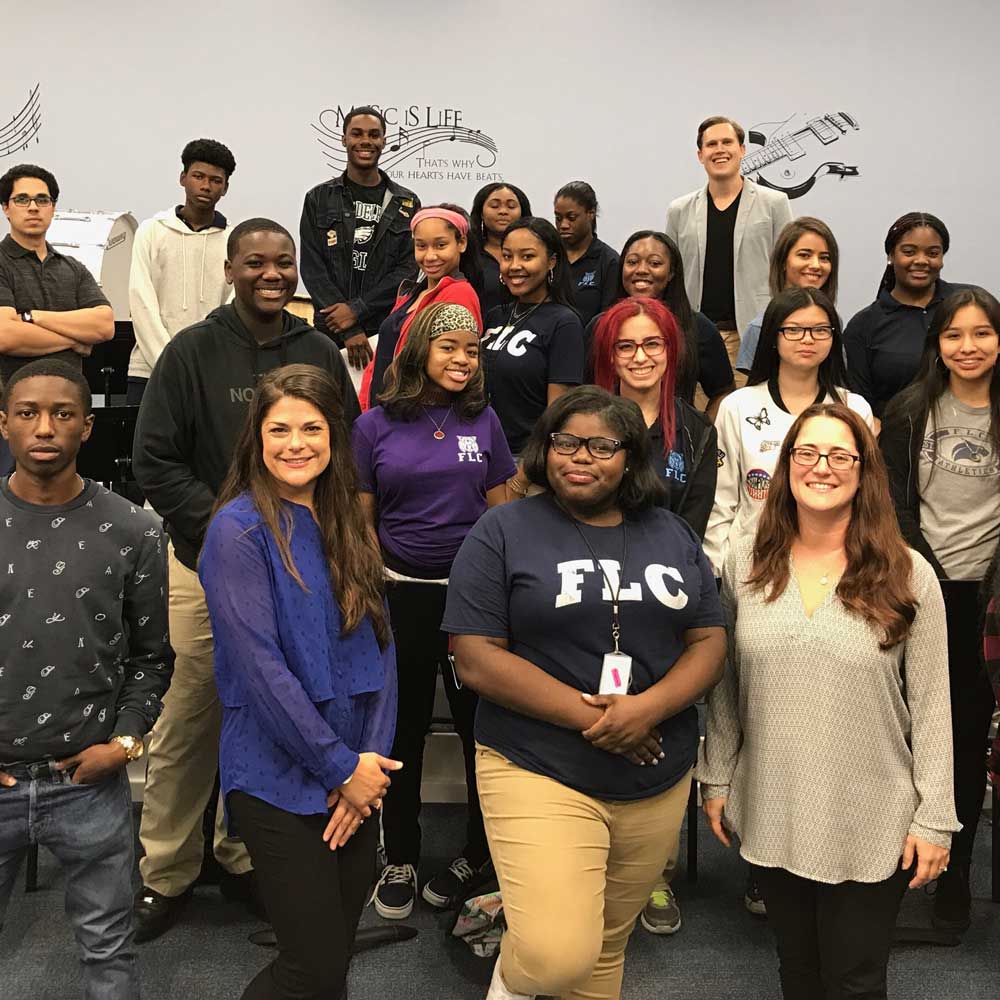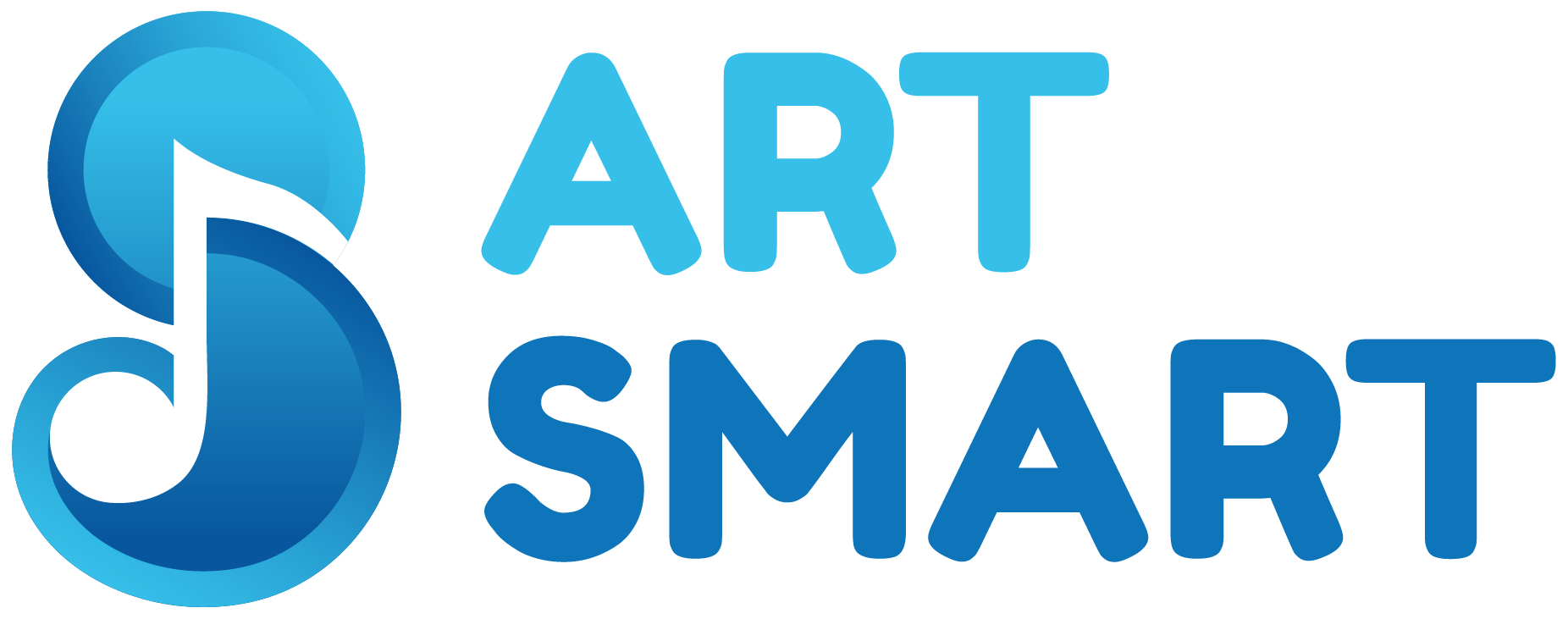
At the end of the 2022-23 academic year, Michelle Frank, a veteran ArtSmart site ambassador and the music director at Franklin Learning Center in Philadelphia, retired from teaching to begin a new journey as Executive Director of the Philadelphia Boys and Girls Choirs. In the following interview, Michelle Frank discusses her background, mentorship, and access to the arts for inner-city students.


“Michelle Frank has been an incredible partner to ArtSmart since day one. She has always strived to maximize music opportunities and access to the arts for all of her students. During her time at FLC, Michelle was the foundation of our programs’ expansion and success across Philadelphia.”
–Lucas DeJesus, ArtSmart Director of National Program Operations
Hometown:
Holmdel, New Jersey
Education:
Undergraduate degrees in Accounting, Theater, and Music from Lehigh University
Master degree in Music Performance from Florida State University
Post Baccalaureate Certification in Music Education
Currently finishing a master degree in Education Leadership at University of Pennsylvania

Tell us about your teaching background:
MF: I did not have a traditional music education degree. I was a singer and working at Curtis Institute of Music in the development department. The School District of Philadelphia had a big hiring boom of teachers. A program called the Philly Teaching Fellows was offering an alternate-route certification for music teachers, an area where they did not have enough teachers. So I applied for the program and did an alternate-route music education certification while teaching full-time at Penn Treaty Middle School. It allowed me to work while I was getting my certification. I was there for a couple years and then moved to a K-8 school in South Philly. I really wanted to work with older students so I applied to Franklin Learning Center (FLC) and began teaching there in 2014. I retired from that position after nine academic years.
What is your favorite part of teaching or the thing you will miss the most?
MF: “The “aha! moment,” when the kids get something you’ve been working really hard at trying to get them to understand, when it’s been a while in the struggle, and then they get it. You see this genuine self-awareness, self-confidence building in a kid right in front of your eyes. They realize they were able to do something or understand something that was a challenge to them. I really like being a part of that process.

Why did you bring ArtSmart to your high school?
MF: I was connected with Michael Fabiano through Michael Bolton at Opera Philadelphia. We met up for lunch at a diner in New Jersey and talked about lessons in schools. ArtSmart was in Newark already but looking to include schools in Philly.
I talked to Michael Fabiano about my kids. I have always felt that equitable access for students in the city is a complex issue. In some ways they have so much more access to the arts than students in the suburbs. Growing up, there was no high music and culture within walking distance of my suburban home, which had no public transportation to speak of. As a teacher in Philly, I can take my students to go see some of the best orchestras and opera companies around. At the same time, I always had access to private lessons and ensemble programming. There was conscious financial investment in providing these activities for children in the town I grew up in, but where I was teaching, that was not something that was consciously invested in.
So Michael and I talked about how ArtSmart levels the playing field for students who can’t access these things, who don’t have that one-to-one support. They don’t have a guide or somebody to help them.
ArtSmart has helped tons of students at FLC prepare for college applications and auditions, things that I cannot do as one teacher with 100+ kids. I do not have that time built into my schedule. These students are competing against other students who do have that. To me it seemed like a really wonderful program to bring to my kids to level that playing field. Get them the thing they need so that they can be prepared to go into auditions and experience making music on a deeper level; improve their musicianship skills.
ArtSmart mentors help their students in so many ways beyond just music. They help them with social experiences, adjusting to being high schoolers, teenagers, and having responsibilities. These are things that being one teacher with 50 students in front of me are things I cannot always do.

How has ArtSmart and music mentorship impacted your students?
MF: Social experiences, responsibilities, and adjusting to high school. The ability to have the one-to-one, where the focus is just on that student, being able to adjust to that particular student’s needs, whether its musically or socially. Identifying what that child needs in order to succeed and be their best version of themselves. Through ArtSmart we have skilled, experienced adults who enjoy children, want to help them, and have a dedicated period of time in the day every week where that student is that person’s primary focus.
One-to-one mentorship is really valuable and something that a lot of kids do not get in high schools. It’s not built into the American high school system. It doesn’t exist especially in our city schools where counselor to student ratios are all over the place. One counselor could be responsible for 500 students. I remember when I was in school we had scheduled times with our counselor to do college prep. That is just not realistic in our urban schools. This is invaluable. ArtSmart students are going on to undergraduates, studying music and pursuing things they love. And simply having that one-to-one time and focus helps deepen the love of music and create a pathway for that student. There are so many things that are good about it.

What was your favorite ArtSmart experience?
MF: I like the masterclasses, where the other students are giving the performer feedback in real time. It’s a conversation. I’m really interested in watching other students give feedback. They have developed a new vocabulary. They are able to listen and hear areas of improvement. They learn how to give critical feedback in a way that is empowering, not mean. Typically you see teenagers being unkind to one another. That’s what we see these days in a lot of social media. This is an environment where kids can be offering suggestions and it is constructive in a way that they would want to hear it for themselves. That piece of learning, how to give and receive feedback, and understanding that feedback is not to be taken personally but used to build on and grow–that is a whole other level of emotional intelligence that teenagers typically don’t have that I attribute to the ArtSmart program.
What makes a good mentor?
Somebody whose full focus is helping the individual without consideration of self. You take your own self out of the equation and your focus is allowing that student to realize the full potential of who they are without imposing your beliefs about who they are supposed to be. The teachers who I have learned the most from have taken as many cues from me as they have from their own experiences, to help me become who I am as an individual.

Any advice for the ArtSmart mentors and students?
Mentors: “Love what you do, love the children you are working with, and understand that there is a special place in heaven for you because the work you are doing is essential, no matter what you feel like on tough days. You’re changing lives for the better. You may not see it today, but you will see it eventually. Know that change is incremental and it will come. What you are doing matters and it is important.”
Students: “Obstacles are what you see when you take your eye off of your goals. Stay focused. Don’t let the obstacles distract you from becoming the best version of yourself. Goals change and that’s okay as long as you’re moving in the direction towards them you’re doing great.”
What are you looking forward to most about your new position?
Flexibility and fluidity with my time, and more time for self-care. I am excited about having a greater impact beyond just the kids in my school. The Philadelphia Boys and Girls Choirs service hundreds of areas of school districts. There is a lot of representation of students from different backgrounds.
It is really exciting to be a part of an organizational shift; organizational growth of a group that has such a high-performing, high-level children’s choir. We are in the process of embarking on a new strategic plan to move us into the future.

Article DETAILS:
By Erin Alcorn, ArtSmart Newsletter | Published on 05/01/2023

